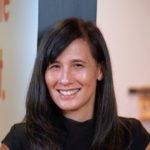Whenever I train people in community engagement I ask one simple question: “Outside of your job, when was the last time you participated in a community engagement activity as a community member?”
Sadly, the answer is so often “never”.
And on the rare occasions where someone has, it’s usually because a road or development was proposed for their street.
The second question I ask is ,“Why haven’t you participated”?
“I’m busy.” “I don’t have time.” “I’m not sure why I would.” “There hasn’t been anything really relevant to me.” Or, “I don’t know”.
When the people whose job it is to engage with the community don’t take part in engagement activities, we’ve got a problem.
Who is under-represented and why?
There’s a common quip amongst planners.
Call a community meeting on planning, and you’re bound to have a retired engineer, planner or architect turn up. They’ll usually arrive with a wad of dog-eared pages and a pile of handwritten notes on what should be done.
They may have valuable insights. But are they representative of the community?
Traditionally there’s been many missing voices. New migrants, those with a disability, the poor, young people and busy families.
Then there are the people who don’t engage because they can’t see the reason. Maybe they’ve completed a survey in the past and never heard back, or never seen the result.
Others simply never saw the invitation to participate. Because there’s nothing compelling or inviting about “Have your say about our planning scheme amendment.” It certainly doesn’t stand out in a busy Facebook or Instagram feed. Nor is it compelling.
Planning is one of the most exciting and important community engagement topics we have in our communities.
The good news is things are changing
Thankfully participation rates are rising. Where several hundred responses was once a success, we’re seeing up to one in 5 households contributing to engagement projects in major cities. In remote areas, the rates can be higher.
Brisbane City Council was able to reach more than 276,000 people directly, and 114,000-plus people contributed comments and ideas to Plan Your Brisbane. In Cairns, Council has attracted one in ten households.
Beyond the numbers, some Councils are doing amazing work to actively reach out and raise the voices of others. And the impact is powerful.
This participation also increases planning literacy, better preparing the community for the next engagement.
How to increase participation
Increasing the number and diversity of voices is possible.
Through our work across Queensland, NSW, Victoria and South Australia, we’ve explored many ways to improve participation and diversity.
- Identify exactly who’s missing and then reach out to discover why – is it an issue of accessibility, a lack of trust, or not having the resources or time
- Ask what topics would motivate them to participate.
- Identify the best way to reach them – especially for people with a disability, first nations people and different cultural groups
- Engage somewhere different – intercept people where they ordinarily go. The beach, the bus stop, coffee shops, or netball.
- Change the language – Have your Say is ok, but it’s not compelling. It doesn’t say why it’s important.
- Tell people why planning’s important – challenge them, or ask to help solve the real problems underpinning your planning project. Why not ask: “Tackle rising property prices. Help us explore new types of homes and where they could be.”
- Swap words for pictures – condense text into images or diagrams.
- Record text into audio files for those with low literacy or people who are busy.
- Ditch the jargon – save it for your peers, or if you have to use it, then add a glossary.
- Use video or video animation – show them the city or town or region now using Google Earth.
- Make it fun – use gamification, old- fashioned games, stand-on maps, fairs, or augmented and virtual reality
- Change our collective mindset – this is how the biggest change happens. If we want to raise the voices of the unheard, we need to break out of the mould of old engagement.
A mindset for diversity, equity and inclusion
It is important to realise that it is not just about the sheer number of participants.
The biggest change we’re witnessing across jurisdictions is an increasing expectation that engagement will be representative, deliberative and evidence-based.
Representative means we need to demonstrate that engagement reflects the diversity of our communities. That could be based on age, gender, geography, ability, cultural background, ethnicity/race, income, education, housing tenure or even attitudinal diversity. When striving for representativeness, we need to consider what does an equitable engagement approach look like and how do we achieve it? If everyone around the table looks like you, speaks like you and thinks like you – then is it representative?
Representativeness means we can plan from the needs of users. For instance, if we ask schools to just send their best and brightest to help us design public spaces, will those spaces reflect the needs of all young people or just those doing well at school?
Deliberative engagement provides the time, space, and evidence to consider the topic before providing advice, recommendations or decisions. It is not a simple online survey. It requires thought and conversation (digital or virtual) that brings people together. The Victorian Local Government Act (2020) requires councils to include deliberative engagement for their Community Vision, Council Plan, Financial Plan and Asset Plan. Here in Queensland, Logan City Council convened a citizen’s panel with a representative sample to develop a community vision based on input from thousands in the broader community.
Codesign is a powerful deliberation method where different users jointly define the problems and opportunities to address, then co-design solutions. It means the outcomes are well rounded and more likely to address actual needs. Queensland Health has also been doing excellent work in this space.
Creating an evidence base can be through ongoing established panels, engaging with widespread samples rather than smaller interested groups, developing detailed and balanced online surveys, or undertaking multiple rounds of iterative engagement to delve beneath a simple question.
Finally, reaching the unheard voices takes a shift in thinking. If I know that a third of my community has a disability then I’ll adapt my engagement for inclusion. I might
- include storytelling from people with different abilities
- frame my engagement questions differently
- provide Auslan interpreters or writers
- prioritise engagement methods where people can talk and listen rather than read and write
- question my own biases and experiences by putting my engagement plan to a diversity committee.
A final word
When I next ask the question: “When was the last time you participated in a community engagement activity as a community member?” wouldn’t it be great if the answer was:
“I’m not the audience we need to reach. My voice is already represented. What we should be asking is: When was the last time we engaged the unheard voices?”
This article appeared in The Agenda Spring 2021






